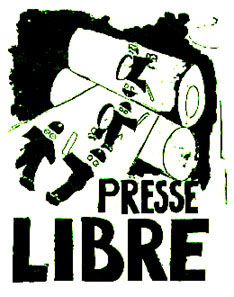
http://www.dhnet.org.br/memoria/posters/franca68/franca68.html
Arts news, exhibitions, events, biennials and conferences, calls, resources and opportunities, technical information, exhibitions and reviews. London Edition.

The posters of the Paris uprising of May 1968 comprise some of the most brilliant graphic works ever to have been associated with a movement for social and political change. This selection of original posters coincides with The Hayward’s 40th birthday and celebrates the vibrant activist graphics and revolutionary spirit of summer 1968.
The exhibition is curated by Johan Kugelberg in collaboration with The Hayward curatorial team and Jeff Boardman, Creative Director of Freewheelin’.
Supported by Converse with additional support from the New York Herald Tribune and Time Out.
To complement this exhibition, Magnum Photos present a projection of photographs by Bruno Barbey, whose record of the Paris riots produced some of the most iconic images from that year.
Thursday 1 May 2008 - Sunday 1 June 2008

40 years ago next month, the streets of the French capital saw workers and students protesting against the increasing levels of unemployment and poverty that were all too apparent under Charles de Gaulle’s conservative government. As a reminder of the power of self-initiated protest, May 68: Street Posters from the Paris Rebellion, launches this Thursday at the Hayward Project Space in London and brings together a range of handmade posters that were used to convey the protestors’ grievances during the uprisings. Before the show opens, we talked to the exhibition’s organiser and curator, Johan Kugelberg, about how this vibrant and uncompromising graphic art came about and what it means today…
In Paris, on the 16 May, students and faculty staff took over the Ecole des Beaux Arts to establish the Atelier Populaire (the Popular Workshop). The organisation went on to produce hundreds of silkscreen posters in an unprecedented outpouring of political graphic art. In a statement, the Atelier Populaire declared the posters “weapons in the service of the struggle… an inseparable part of it. Their rightful place is in the centres of conflict, that is to say, in the streets and on the walls of the factories.”

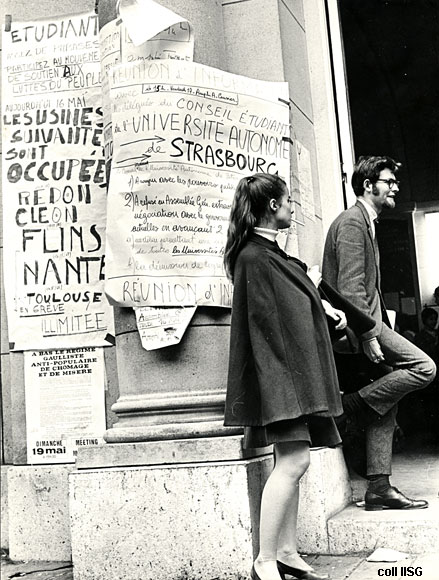
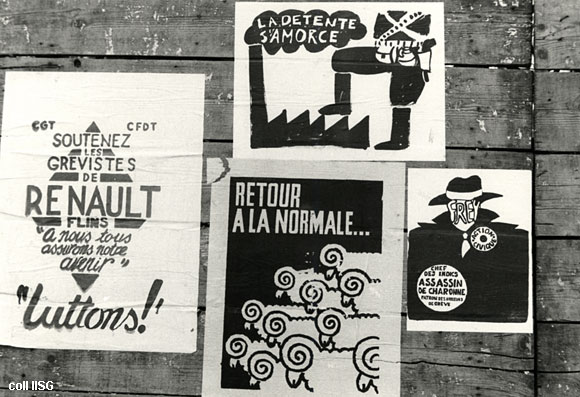

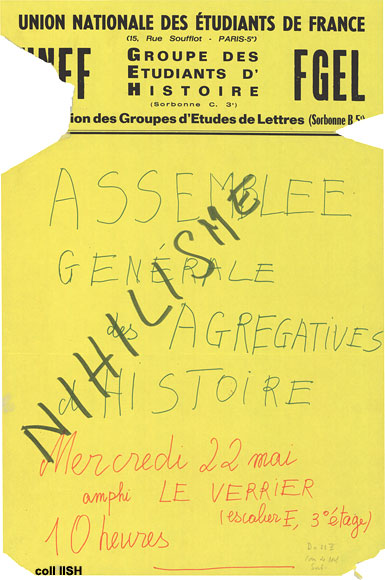



In the first commission to use the building's iconic river façade, and the first major public museum display of street art in London, Tate Modern presents the work of six internationally acclaimed artists whose work is intricately linked to the urban environment:
Blu from Bologna, Italy; the artist collective Faile from New York, USA; JR from Paris, France; Nunca and Os Gemeos, both from Sao Paulo, Brazil and Sixeart from Barcelona, Spain.
You can also take the Street Art Walking Tour: an urban tour of site-specific art from a group of five Madrid-based street artists: 3TTMan, Spok, Nano 4814, El Tono and Nuria – a map is available here and in the gallery.
Various events will take place during the exhibition, including an interactive evening with experimental New York artists Graffiti Research Lab, refacing Tate Modern with graffiti light projections.
Street Art at Tate Modern opens at the same time as Tate Modern's four day festival of art and performance, UBS Openings: The Long Weekend on 23 May.
Play the Street Art game from Tate Kids
=============


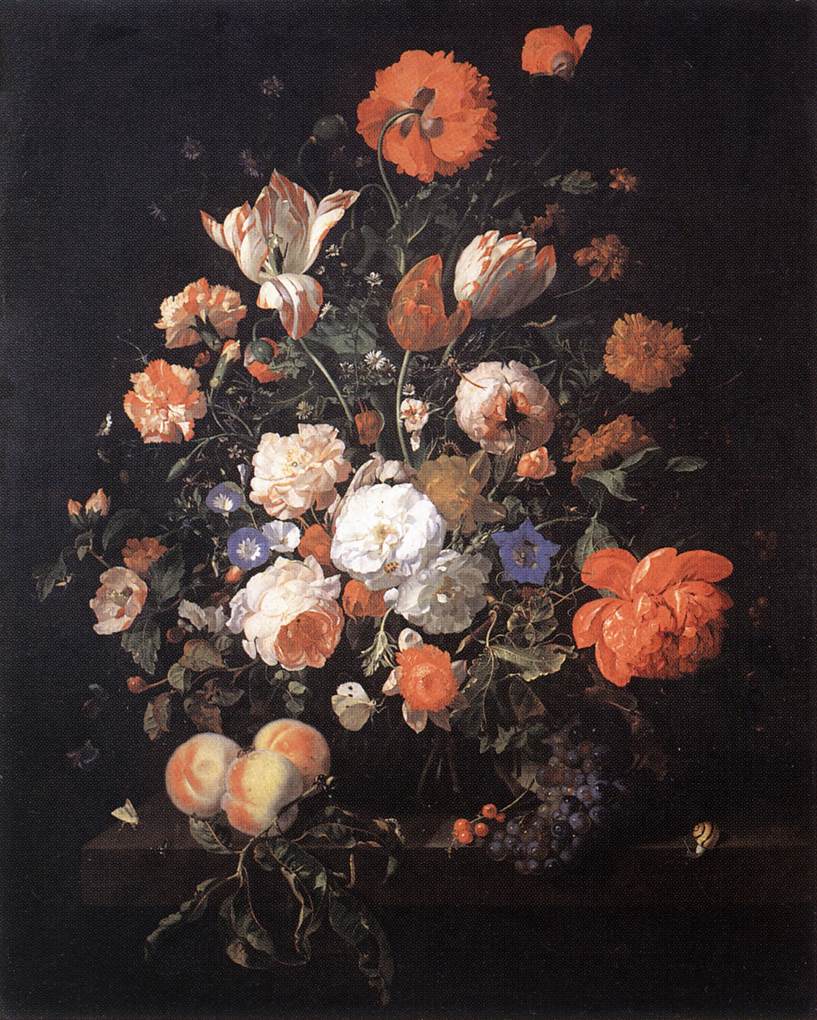
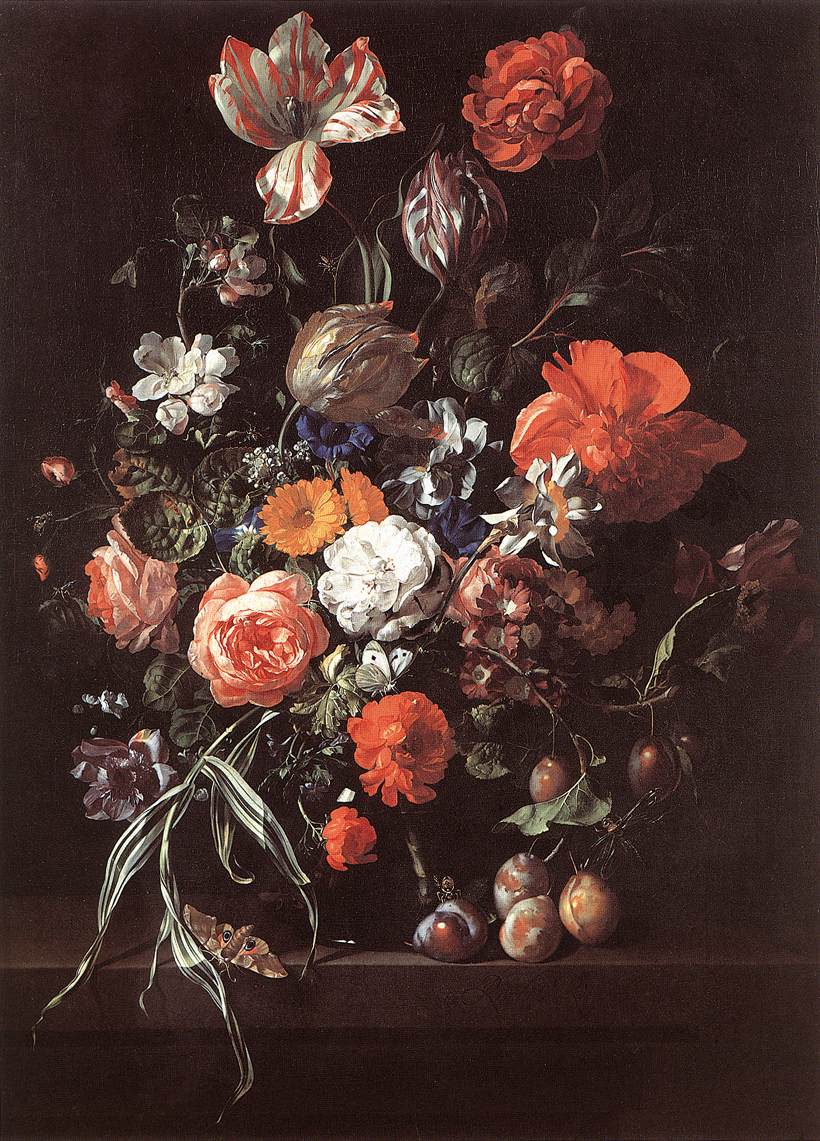
Rachel was given commissions by wealthy clients and could thus concentrate on painting only a few works per year, devoting several months to each. Orders had to be placed a long time in advance. In 1708 she was offered the post of court painter to the Elector Palatine. By now the mother of a large family, she was reluctant to go and live in Düsseldorf, and was therefore exempted from her Residenzpflicht, the obligation to live and work at court. This was not a unique construction: Adriaan van der Werf and Jan Weenix were also appointed court painters without having to make their homes in Düsseldorf. Rachel Ruysch received an annual stipend, for which she was required to make only one painting a year for the collection of the Elector and his wife.
She travelled to Düsseldorf a couple of times to deliver her work, but she continued to live in Wolvenstraat in Amsterdam with her husband and numerous children. Even though she was almost 30 when she married, she gave birth to ten children, the last of whom, a boy, was born when she was 47.
The painters’ biographer Johan van Gool met Rachel in 1748, when she was 84. ‘For a woman of such a ripe age’, he records, she had kept ‘her mind and her appearance wonderfully well’. She received him very kindly and politely, told him about her career, and showed him some of her work. Most of her paintings had been sent abroad, but she showed him a painting started the year before, which she still hoped to finish.

24th May 2008 - 14th June 2008
Launch of the hand drawn animation, 'slowly disappearing darling', the series of 100 drawings that comprise it, an artist book, and other recent works on paper.
Port Jackson Press
Centre for Australian Printmaking
67 Cambridge St, Collingwood VIC 3066

I had an opportunity to meet Martin King in Melbourne in 2007. And the great pleasure of watching him at work.


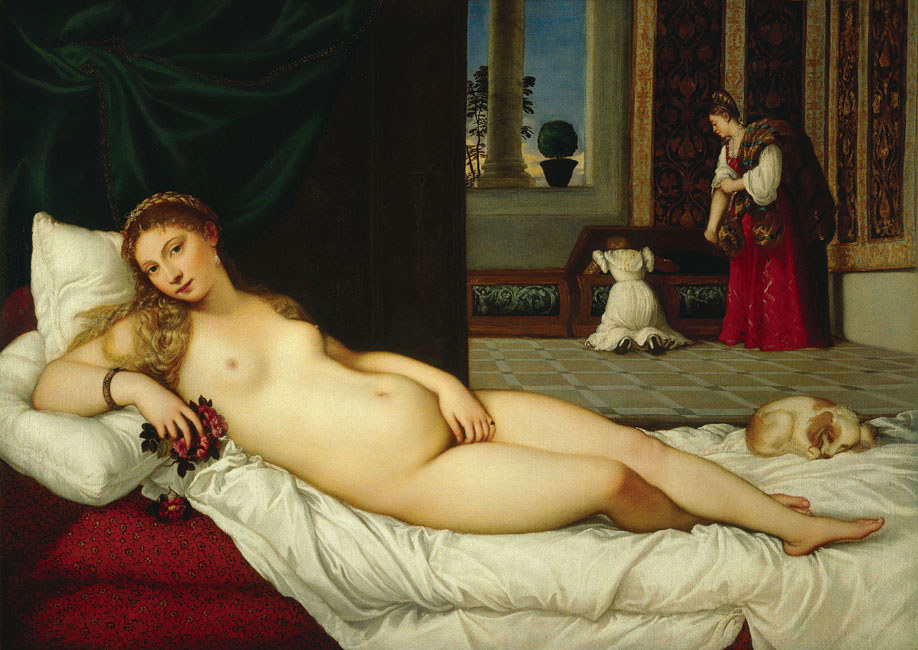

Venus' direct gaze has been characterized as an "unambiguous sexual invitation" by one wishful art historian. The invitation is germane to the matrimonial context, however, and in no way promiscuous. We may recall the forthright glance of "Profane Love," likewise addressed to her husband. Although modern viewers may be discomforted when caught in the act of looking --"caught in the act of voyeurism" -- Renaissance viewers would find such attention in keeping with the expectation, endorsed by Leon Battista Alberti, that a character would acknowledge beholders with a glance or a gesture. The modern critics' presumption of Venus' impropriety is a misconception that Edouard Manet's Olympia popularized.
Manet's protagonist is a prostitute --not a courtesan, as some critics have assumed Titian's Venus to be, but more the nineteenth-century equivalent of the Renaissance meretrice. The distinction among these categories were not mere niceties in Renaissance Venice. In general, a courtesan was distinguished from a meretrice (prostitute) or puttana (whore) by her class (or class pretensions), by her superior economic status, and by the social status and (limited) number of her lovers. As a concomitant of these social and "romantic" aspects of her position, a courtesan might also claim exemption from sumptuary laws concerning dress and legislation regarding where she might live.
Available to all comers and surrounded by explicit references to her trade, Olympia receives her next john --by implication, the beholder. But what of her Venetian predecessor? In a domestic setting and without Cupid or other explicitly mythological trappings, she may be a goddess or a mortal. If mortal, and even if a courtesan or mistress, she is nonetheless presented with clear indications of social status, and these are merely the trappings that serve to confirm what each woman reveals about herself in her expression and gestures: Olympia is hardened, cynical, blasée; Venus is confident, intelligent, alert. Whatever may have motivated Manet's alterations to Titian's composition --including the imposition of a new name-- the Frenchman's changes imply that he understood the Venetian woman to be a (culture) goddess who required not only modernization but profanation, not only emulation but denigration.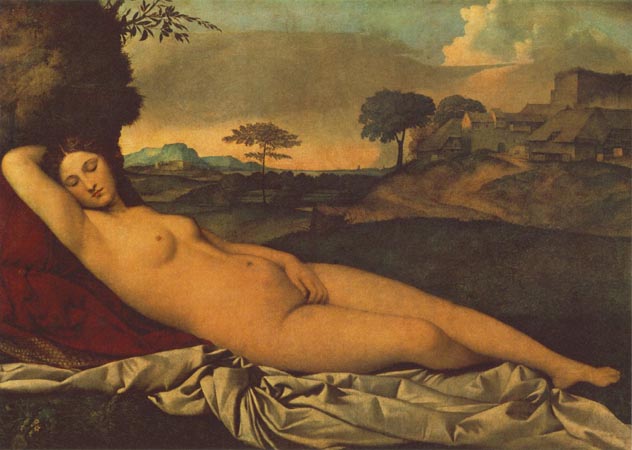



Study for Portrait II, from Bacon's series of "Pope" paintings inspired by Velazquez, made .. an impact... Bids for the brooding picture shot up in £500,000 segments and it was sold in less than two minutes.
Christie's had called it the most important picture from the series to appear on the market and it almost doubled the auction record for a Bacon - £7.8 million set last year." Telegraph article
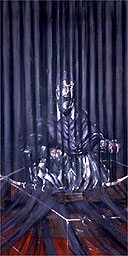
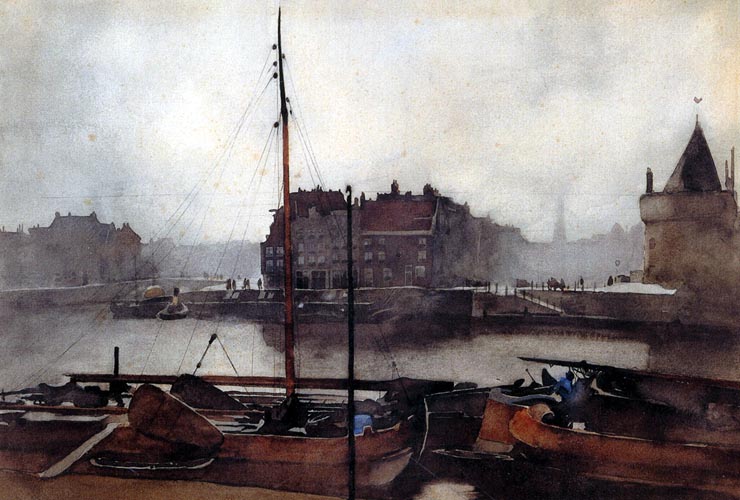









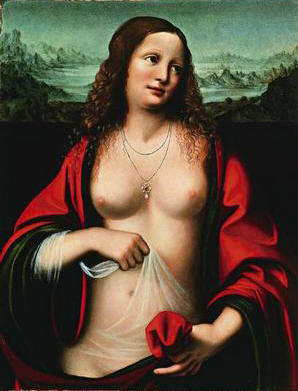


The Nag Hammadi texts tell us about early Christians. They were written in Coptic, the language of early Christian Egypt. As most ancient Christian texts have been lost, this discovery was exceptional.
The discovery includes the Gospel of Thomas, the Gospel of Philip and the Acts of Peter. None of these texts were included in the Bible, because the content didn't conform to Christian doctrine, and they're referred to as apocryphal.In texts like the Gospel of Philip, Mary was presented as a symbol of wisdom. However in the Gospel of Mary, she is the one in charge, telling the disciples about Jesus' teachings.
Matthew defends Mary and quells Peter's attack on her. In the text, Peter's problem seems to be that Jesus selected Mary above the other disciples to interpret his teachings. Peter sees Mary as a rival for the leadership of the group itself.
Perhaps the Gospel of Mary was just too radical. It presents Mary as a teacher and spiritual guide to the other disciples. She's not just a disciple; she's the apostle to the apostles.
http://www.bbc.co.uk/religion/religions/christianity/history/marymagdalene.shtml
=====
... Levi answered and said to Peter, Peter you have always been hot tempered.
7) Now I see you contending against the woman like the adversaries.
8) But if the Savior made her worthy, who are you indeed to reject her? Surely the Savior knows her very well.
9) That is why He loved her more than us
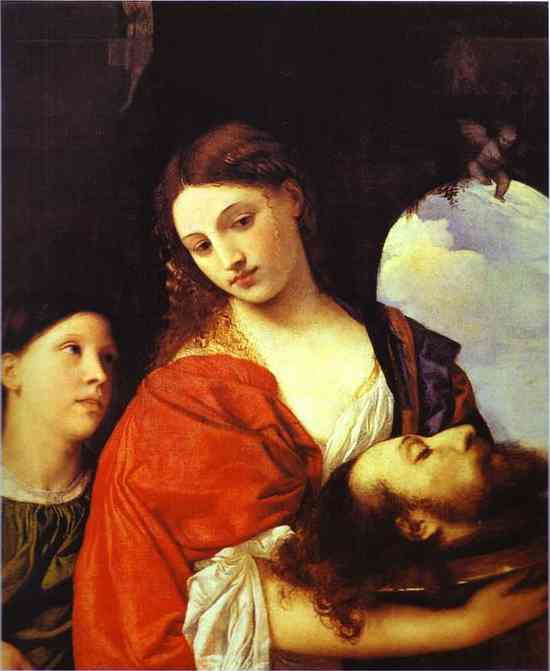


At various intervals between 1509 and 1526, the great Florentine artist Andrea del Sarto painted the walls with frescoes depicting Scenes from the life of St John the Baptist and the Virtues, except for two episodes that were painted by Franciabigio.
For any information:
Chiostro dello Scalzo
Via Cavour 69.
Open Mon, Tue, Sat 8,15am-1.50pm.
Admission: free.
======

Florentine painter. The epithet 'del sarto' (of the tailor) is derived from his father's profession; his real name was Andrea d'Agnolo di Francesco. After an apprenticeship under Piero di Cosimo he soon absorbed the poised and graceful style developed by Fra Bartolommeo and Raphael in Florence during the first decade of the 16th century, and following the departures of Leonardo, Raphael, and Michelangelo (all of whom had left Florence by 1509) he became established with Bartolommeo as the leading painter of the city. Apart from a visit to Fontainebleau in 1518-19 to work for Francis I, Andrea was based in Florence all his life, although he probably visited Rome soon after his return from France, and made short visits elsewhere.
He excelled as a fresco decorator (there are outstanding examples in Florence in SS. Annunziata and the Chiostro dello Scalzo), and he also painted superb altarpieces (The Madonna of the Harpies, Uffizi, Florence, 1517) and portraits (A Young Man, National Gallery, London).
Andrea executed fresco decorations for the Servites, a religious order, in their Church of the Santissima Annunziata at Florence. By 1510 he completed five scenes depicting events in the life of S. Filippo Benizzi, a 13th-century leader of the Servite order. Many commissions followed, including the grisailles (monochromatic frescoes painted in shades of gray) of Saint John the Baptist in the cloister of the Scalzo in Florence.
In 1518 he was summoned to the court of Francis I of France, who entrusted him with money to purchase works of art in Italy. He returned to Florence in 1519 and remained there, using the money for his own purposes. In Florence, Andrea continued his work on the fresco series in the cloister of the Scalzo, which he completed in 1526. In 1525 he painted the Madonna del Sacco, which is generally considered his masterpiece, in the cloister of Santissima Annunziata. He executed his last major work in fresco, the Last Supper (1527) in the refectory of the convent of San Salvi near Florence. Among his other noted works are the Pietà (1524, Pitti Palace) and The Assumption (1530, Pitti Palace).
Andrea's reputation was largely made and marred by Vasari, who said that Andrea's works were 'faultless' but represented him as a weakling completely under the thumb of his wicked wife. In Robert Browning's poem on the painter (1855) and in a psychoanalytic essay by Freud's disciple Ernest Jones (1913) attempts are made to link a supposed lack of vigour in his mellifluous art with these traits of character. This, however, is hardly just and a good deal of Vasari's account of Andrea's private life has been shown to be factually inaccurate (the scandalmongering is mainly in the 1550 edition of his book and was suppressed in the 1568 edition).
Andrea has suffered from being the contemporary of such giants as Michelangelo and Raphael, but he undoubtedly ranks as one of the greatest masters of his time. In grandeur and gracefulness he approaches Raphael, and he had a feeling for colour and atmosphere that was unrivalled among Florentine painters of his period. He also numbers among the finest draughtsmen of the Renaissance (the best collection of his drawings is in the Uffizi). Certain features of his art foreshadow the Mannerist experiments of his great pupils Pontormo and Rosso Fiorentino. The many other artists who trained in his busy workshop include Salviati and Vasari.


